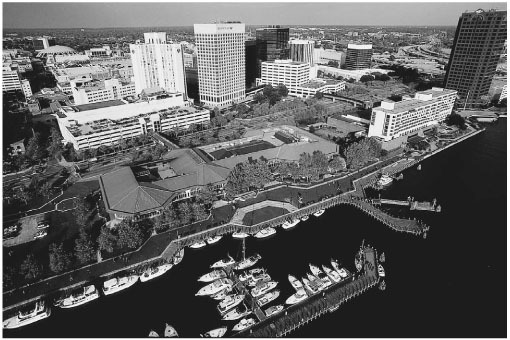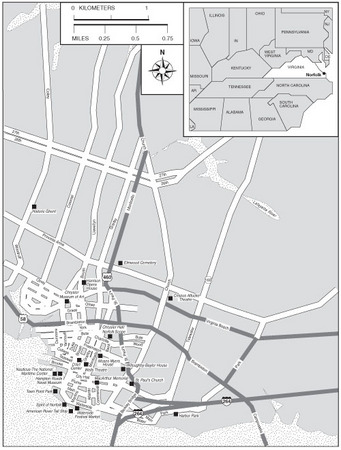Norfolk
Norfolk: Geography and Climate
Norfolk: History
Norfolk: Population Profile
Norfolk: Municipal Government
Norfolk: Economy
Norfolk: Education and Research
Norfolk: Health Care
Norfolk: Recreation
Norfolk: Convention Facilities
Norfolk: Transportation
Norfolk: Communications

The City in Brief
Founded: 1682 (incorporated 1705)
Head Official: Mayor Paul D. Fraim (I) (since 1994)
City Population
1980: 266,979
1990: 261,250
2000: 234,403
2003 estimate: 241,727
Percent change, 1990–2000: -10.2%
U.S. rank in 1990: 75th (State rank: 2nd)
U.S. rank in 2000: 72nd (State rank: 2nd)
Metropolitan Area Population (MSA)
1980: 1,200,998
1990: 1,430,974
2000: 1,551,351
Percent change, 1990–2000: 8.4%
U.S. rank in 1990: 27th
U.S. rank in 2000: 33rd
Area: 53.73 square miles (2000)
Elevation: 13 feet above sea level
Average Annual Temperature: 59.57° F;
Average Annual Precipitation: 43.89 inches total; 7.5 inches of snowfall
Major Economic Sectors: Services, trade, government
Unemployment rate: 4.0% (December 2004)
Per Capita Income: $17,372 (1999)
2002 FBI Crime Index Total: 15,476
Major Colleges and Universities: Old Dominion University, Norfolk State University, Virginia Wesleyan College, Eastern Virginia Medical School, Troy State University, Tidewater Community College
Daily Newspaper: The Virginian-Pilot
